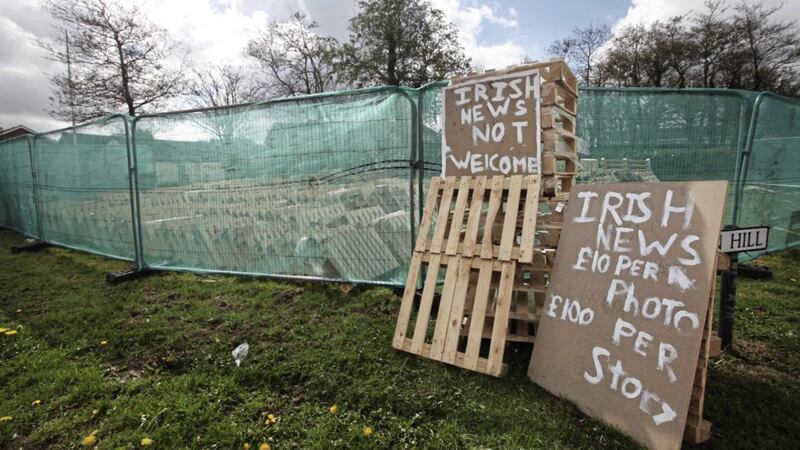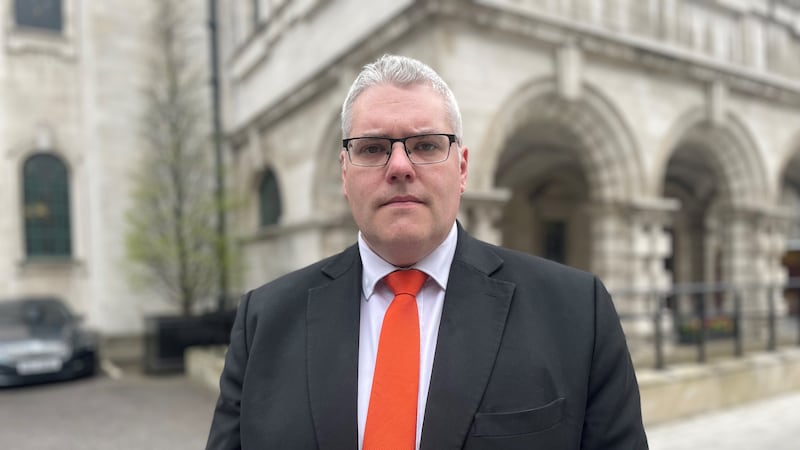We are going to have a bonfire problem this summer.
Listen carefully to statements from politicians and public bodies dealing with the issue and their mounting concern is evident.
What is changing since previous summers is the drive to control and regulate bonfires by councils and other statutory agencies, plus the backlash this has produced.
There is an extent to which bonfires have risen to the top of the agenda because the last major flashpoint parade at Ardoyne has been resolved.
It is understandable that issues of parading and bonfires are conflated - people do this across the political spectrum.
For many bonfire builders, the connection is a conspiracy: first nationalists came for the Twelfth, now they are coming for the Eleventh.
For others, there is hope the reduction in contentious parades may offer lessons on bonfires.
This week, the Bloody Sunday Trust received a €500,000 EU grant to apply the “Derry model” of agreement on parades to other areas of conflict resolution.
Unfortunately, parading solutions may be irrelevant to bonfires, as the inter-community aspect of each problem is completely different.
A parade becomes contentious when unionists march through a nationalist area.
Bringing both sides together for talks and a deal, as between residents and the Apprentice Boys in Derry, might be an admirable achievement but as a conflict resolution concept it is obvious to the point of being trite.
Bonfires, by contrast, are overwhelmingly built by unionists in unionist areas. The main victims of any given bonfire are people living beside it and hence among those building it, making them horribly vulnerable to intimidation.
So this is a problem unionists need to resolve among themselves. Nationalists have entered the picture as an external factor, via councils where unionists are in the minority.
Rather than creating an inter-community argument that points to an eventual agreement, moves by councils have made it harder for unionists to compromise with each other, because hardliners can portray it as surrendering to a nationalist ‘culture war’.
Bonfires are a legitimate nationalist concern - regulation is needed and desired across the community. Some nationalist councillors are addressing this sincerely, some may be insincere, while many others may simply be going along with legal and policy direction from officials. But none of that is going to cut any ice among the tyres and pallets.
All these issues were simmering towards a head last summer before the DUP-Tory deal and the Grenfell fire forced unionists to gloss it over.
Faced with the prospect of houses being set ablaze, including a tower block in south Belfast, all watched by a hostile and newly attentive public in Britain, the DUP, UUP and PUP suddenly backed a Belfast City Council injunction against enlarging certain bonfires, having previously railed against it.
The DUP then issued a statement accusing Sinn Féin of a culture war but imploring unionists to fight back with good behaviour over the summer, followed by a “cultural convention” in the autumn.
This was the ‘graduated response’ model of conflict resolution - buy some time with empty threats and promises until the heat goes out of the situation.
It was how the DUP handled the end of the Ardoyne dispute but that only worked because talks between residents and marchers were ongoing, amid genuine soul-searching within loyalism and the Orange Order.
What has unionism done with the breathing space on bonfires in bought last summer? The phrase ‘cultural convention’ was never heard again.
The DUP, UUP and PUP produced a joint report on bonfires in March after consulting 60 groups but this was ridiculed for failing to even mention loyalist paramilitaries.
The drive to regulation has in fact caused loyalists to muscle in on bonfires, as a means of community control and access to grants.
Perversely, this could be reason for hope. A tradition long managed by unreachable youths is rapidly becoming amenable to quite modest policing and even bureaucratic pressure. However, unionists would need to provide political cover for this and they are failing to do so. If anything, they seem less interested in taking a stand for ‘good behaviour’ as the bizarre Westminster circumstances leading up to last summer fade from urgency, while the vacuum at Stormont continues.
Perhaps the only direct lesson from the parading model is that from Drumcree to Ardoyne it took over 20 years of painstaking, piecemeal solutions, until the sense of an overall settlement arrived more by exhaustion than by design.
We have at least that many summers of the bonfire issue ahead.
newton@irishnews.com









